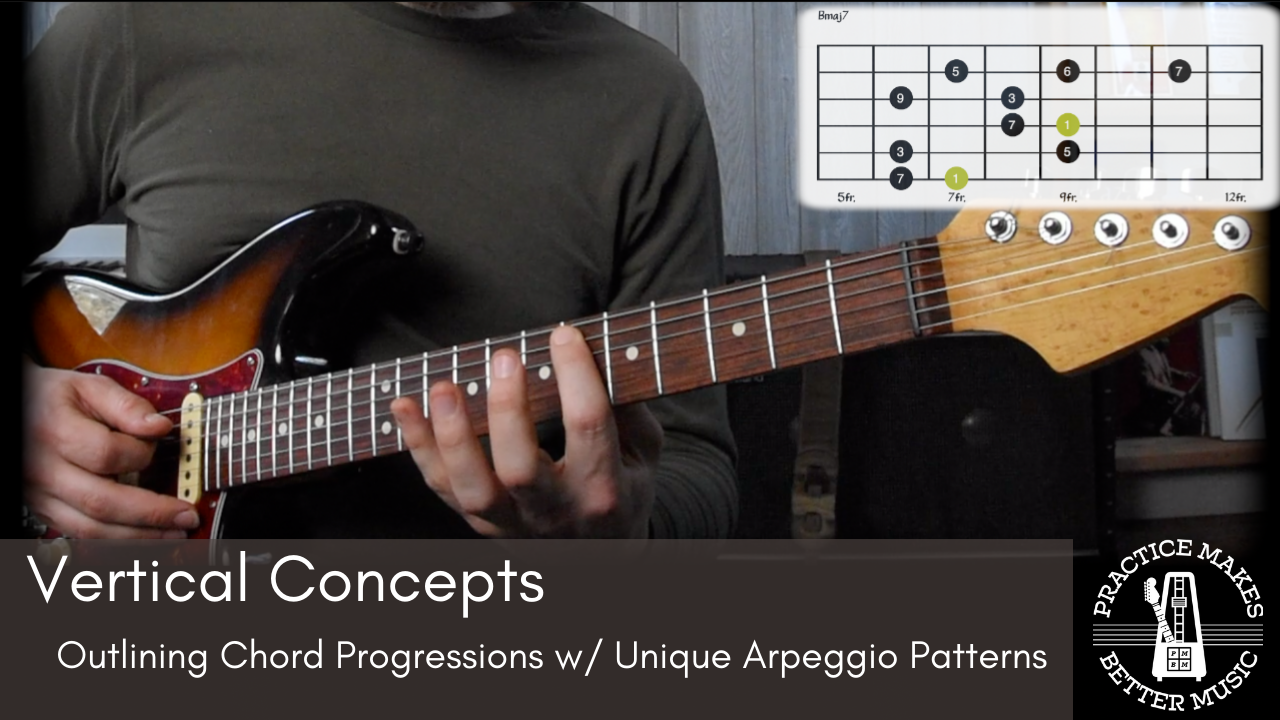There are many different ways to approach improvisation. Using a linear approach, you derive ideas from scale patterns. In a vertical approach, you use non-consecutive scale tones (aka arpeggios), and instead outline the harmonic content of whatever you are playing over. I call this outlining chord progressions, and it can be practiced using unique arpeggio patterns. With a melodic approach you can combine linear and vertical ideas to create complete musical ideas.
Most players begin with the linear approach, learning scale patterns that work with different chords. This approach is very useful, but is only one part of the picture. The purpose of this lesson is to introduce a method of practicing the vertical approach, in order to help you move beyond linear ideas.
What I’ve done here is prepare a unique arpeggio pattern, and applied it to a common chord progression. The progression is a simple pattern in the key of B, using diatonic as well as one non-diatonic chord. Diatonic means “contained within one major key”. Non-diatonic refers to any chord that doesn’t come directly from that key.
By practicing a single arpeggio pattern through a chord progression, you can start to get the feel for allowing harmony to inspire your soloing ideas. This is a direct compliment to the linear approach, and both are extremely useful.
Taking This Idea Further
You can take this concept and come up with your own ideas using this three step process:
- Pick a chord progression – choose a key and decide on a simple progression containing 4-8 chords.
- Pick a note sequence – begin on the first chord of your progression and pick a sequence of notes using the arpeggio of that chord. For example 1-3-5-3
- Pick a rhythm – choose a rhythm that is simple and repeatable.
- Ready, aim, fire! Practice your new arpeggio sequence through the chord progression you chose.
You’ll need to adjust the arpeggio to fit the type of chord (major, minor etc.). Going through this process will give you a much deeper understanding of arpeggios and how they interrelate within a given progression.

Leave a Reply
You must be logged in to post a comment.